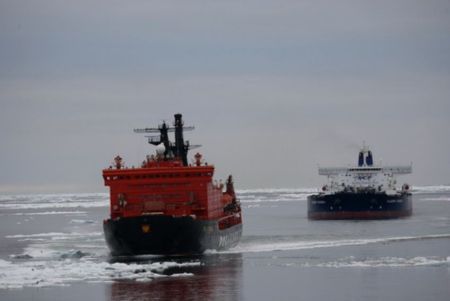
Russia is pledging to spend billions on icebreakers and search and rescue bases along the country’s Northern Sea route to help turn it into a major shipping lane capable of supporting tankers and cargo ships.
At the second International Arctic Forum Sept. 21 to 24 in Arkhangelsk, Russia, Russian Prime Minister Vladimir Putin promised 10 new search and rescue bases and a fleet of new icebreakers for the Northern Sea Route, also once known as the Northeast Passage.
The shipping lane is a 4,000 nautical mile shortcut between Europe and Asia, running from Murmansk in the Barents Sea along Russia’s Arctic coast to the Bering Strait.
Reports indicate that ice along the Russian Coast is not as nearly as severe as ice in the Northwest Passage. Still, both places are seeing more ships, but while Russia appears to welcome that, Canada’s position is foggy, said Rob Huebert, an associate professor of political science at the University of Calgary.
Shipping through Northwest Passage at least a decade away
“I’ve never seen any government of Canada, Liberal or Conservative, come out and say ‘We want international shipping and we want to facilitate it,’” he said.
People in the North would like to see even one search and rescue base set up here, but Prime Minister Stephen Harper recently said that’s not possible.
All of this raises doubts that the Northwest Passage will ever become a viable shipping route.
Capt. Craig Whiteway has worked on ships in the area since 1993.
“Even though there may be less ice, it doesn’t mean it’s less hazardous or less of an impediment to shipping,” he said.
Coast Guard statistics from 2010 show only a handful of commercial ships have ever used the Northwest Passage. The Arctic Council in 2009 said the area would not be a viable trans-Arctic shipping route for at least a decade.
(CBC News)
We use cookies to improve your experience. By continuing to use our site, you accept our Cookies, Privacy Policy,Terms and Conditions. Close X